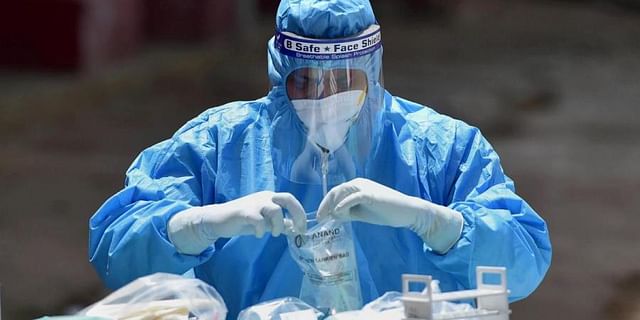
COVID third wave peak likely by Feb 1 to 15, shows IIT Madras analysis

India has recorded a very high infection transmission rate amid the Omicron surge, with the R-naught value – which indicates the spread of COVID-19 – standing at 4 this week, according to a preliminary analysis by IIT Madras.
The study has predicted the peak of the ongoing third wave in India between February 1 and 15.
R-naught or R0 indicates the number of people an infected person can spread the disease to. If this value goes below 1, the pandemic is considered to have ended.
According to a PTI report, which cited a preliminary analysis by computational modelling done by IIT Madras, the R0 value was close to 2.9 nationally in the December 25 to 31 week. It was then recorded at 4 this week (January 1-6).
Dr Jayant Jha, Assistant Professor, Department of Mathematics at IIT Madras, said R0 depends on transmissibility probability, contact rate and the expected time interval in which infection can happen.
Also read: Omicron variant appears to be mild, but what does ‘mild’ mean?
“Now, with the increase in quarantine measures or restrictions, maybe the contact rate will go down and then in that case R0 can decrease. So, based on our preliminary analysis, which is just based on the last two weeks, we can tell these numbers, but again, these numbers can change based on how much affirmative action is taken with respect to social gathering and all,” he was quoted as saying.
Jha said based on IIT Madras’ estimate, the peak in the current wave is expected to come between February 1 and 15 and it is expected to be sharper than earlier peaks.
Also read: India’s COVID mortality may be 6-7 times higher than reported: Study
“What we expect from the exploratory data analysis is that the peak will happen somewhere between February 1 and 15 and our analysis also shows that as compared to previous waves, there will be a sharper increase to the peak,” Jha said, adding that this wave will be different from the previous waves because of vaccination and factors like less social distancing seen this time.
“The advantage here is that almost 50 per cent of the population this time has got vaccinated,” Jha added.
India saw a single-day rise of 1,41,986 new coronavirus cases, taking the total tally to 3,53,68,372, which included 3,071 cases of Omicron, the health ministry said on Saturday.


